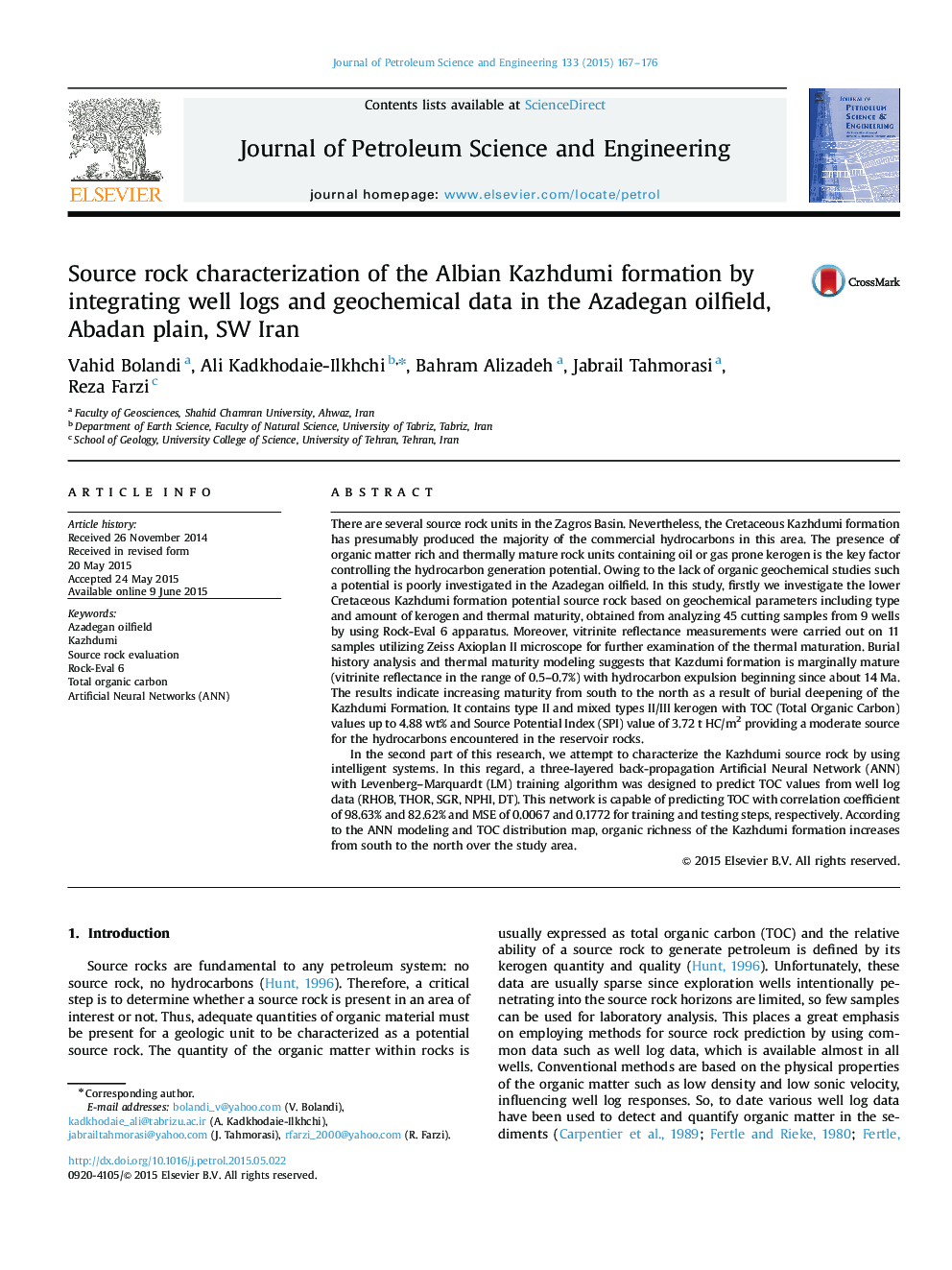| کد مقاله | کد نشریه | سال انتشار | مقاله انگلیسی | نسخه تمام متن |
|---|---|---|---|---|
| 1754708 | 1522808 | 2015 | 10 صفحه PDF | دانلود رایگان |
• Joint use of intelligent system, geochemical data and well logs.
• Synthesizing TOC (wt%) from conventional well log data.
• Generation of TOC distribution map for the study area.
• Burial history reconstruction.
There are several source rock units in the Zagros Basin. Nevertheless, the Cretaceous Kazhdumi formation has presumably produced the majority of the commercial hydrocarbons in this area. The presence of organic matter rich and thermally mature rock units containing oil or gas prone kerogen is the key factor controlling the hydrocarbon generation potential. Owing to the lack of organic geochemical studies such a potential is poorly investigated in the Azadegan oilfield. In this study, firstly we investigate the lower Cretaceous Kazhdumi formation potential source rock based on geochemical parameters including type and amount of kerogen and thermal maturity, obtained from analyzing 45 cutting samples from 9 wells by using Rock-Eval 6 apparatus. Moreover, vitrinite reflectance measurements were carried out on 11 samples utilizing Zeiss Axioplan II microscope for further examination of the thermal maturation. Burial history analysis and thermal maturity modeling suggests that Kazdumi formation is marginally mature (vitrinite reflectance in the range of 0.5–0.7%) with hydrocarbon expulsion beginning since about 14 Ma. The results indicate increasing maturity from south to the north as a result of burial deepening of the Kazhdumi Formation. It contains type II and mixed types II/III kerogen with TOC (Total Organic Carbon) values up to 4.88 wt% and Source Potential Index (SPI) value of 3.72 t HC/m2 providing a moderate source for the hydrocarbons encountered in the reservoir rocks.In the second part of this research, we attempt to characterize the Kazhdumi source rock by using intelligent systems. In this regard, a three-layered back-propagation Artificial Neural Network (ANN) with Levenberg–Marquardt (LM) training algorithm was designed to predict TOC values from well log data (RHOB, THOR, SGR, NPHI, DT). This network is capable of predicting TOC with correlation coefficient of 98.63% and 82.62% and MSE of 0.0067 and 0.1772 for training and testing steps, respectively. According to the ANN modeling and TOC distribution map, organic richness of the Kazhdumi formation increases from south to the north over the study area.
Journal: Journal of Petroleum Science and Engineering - Volume 133, September 2015, Pages 167–176
